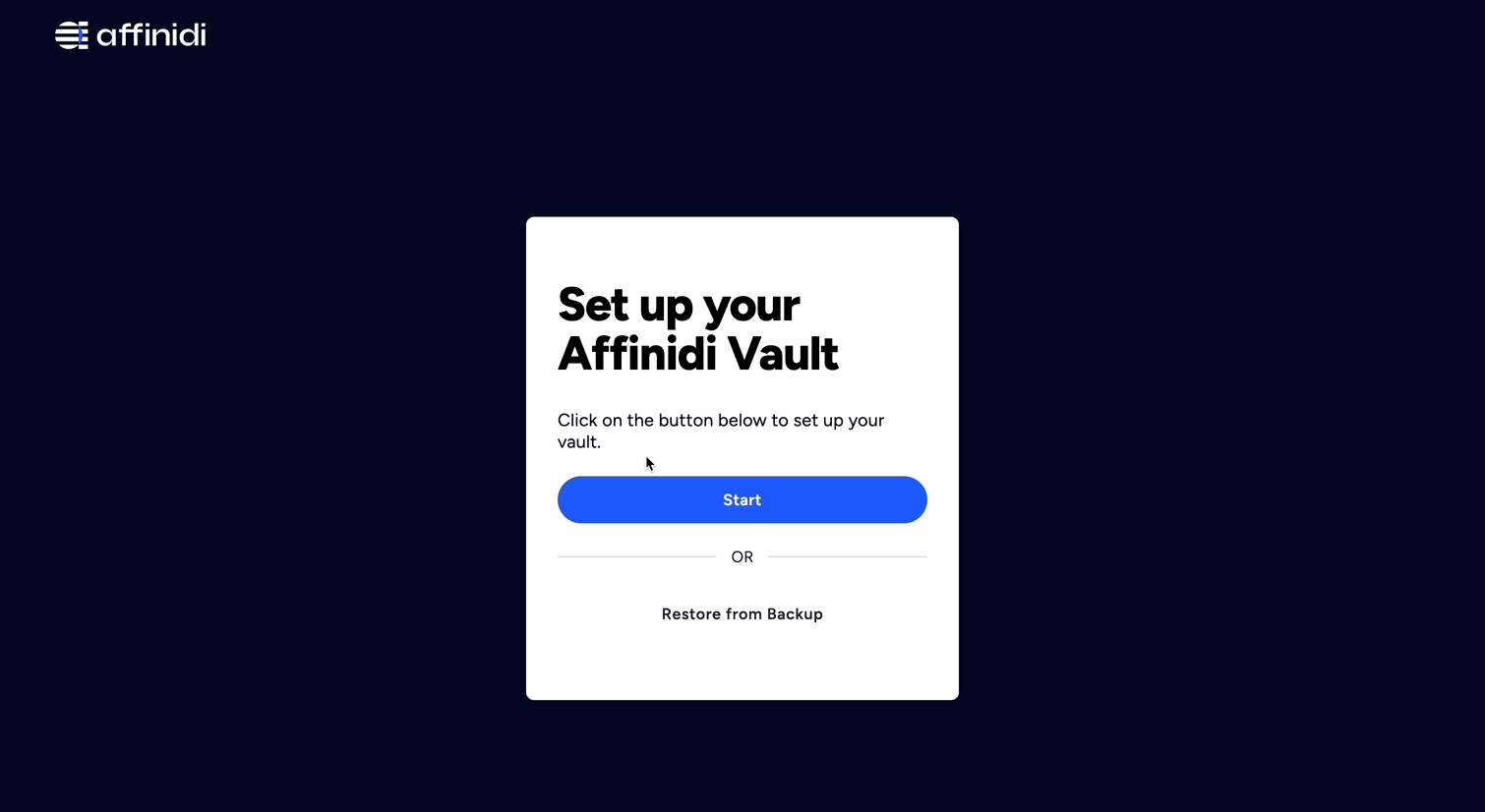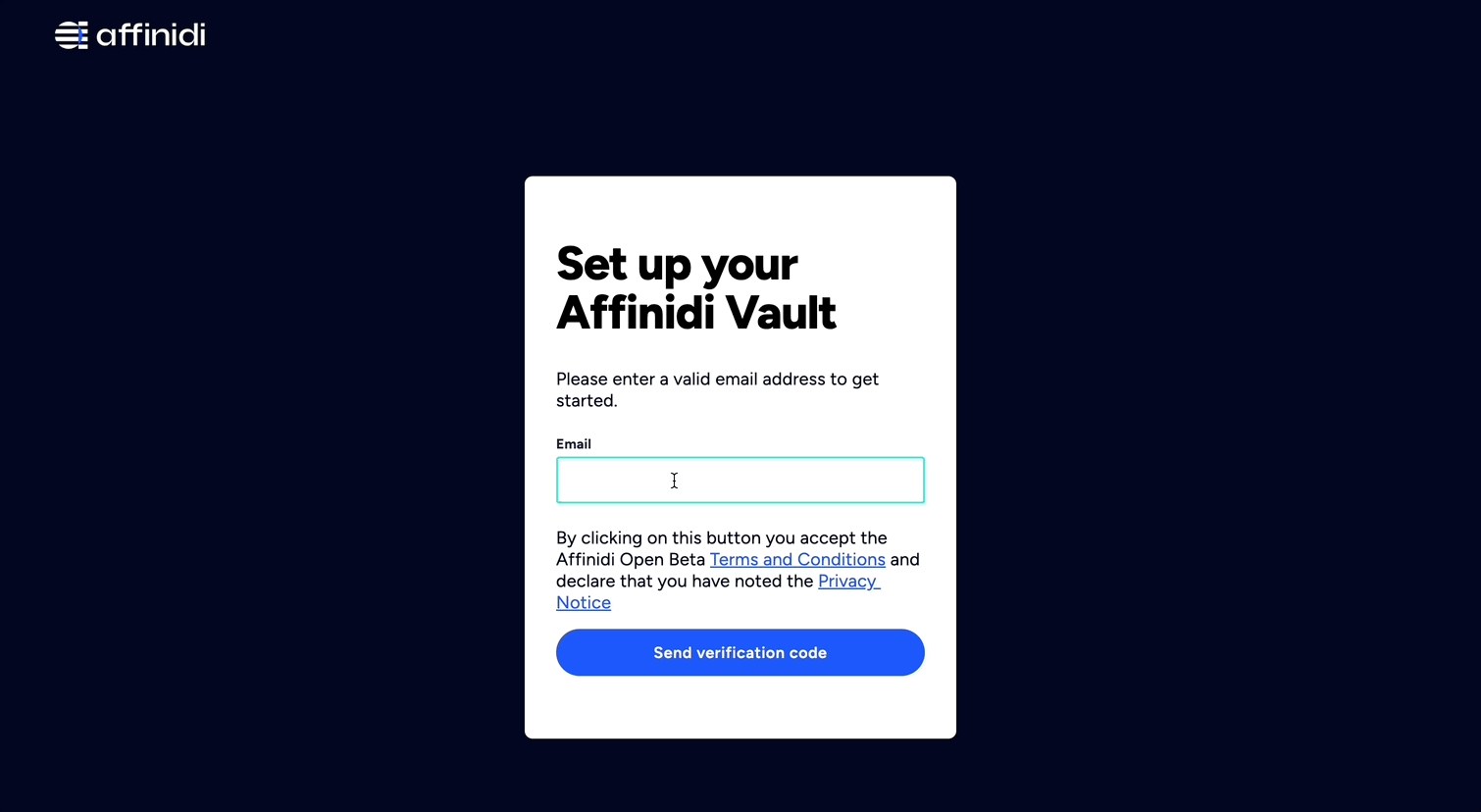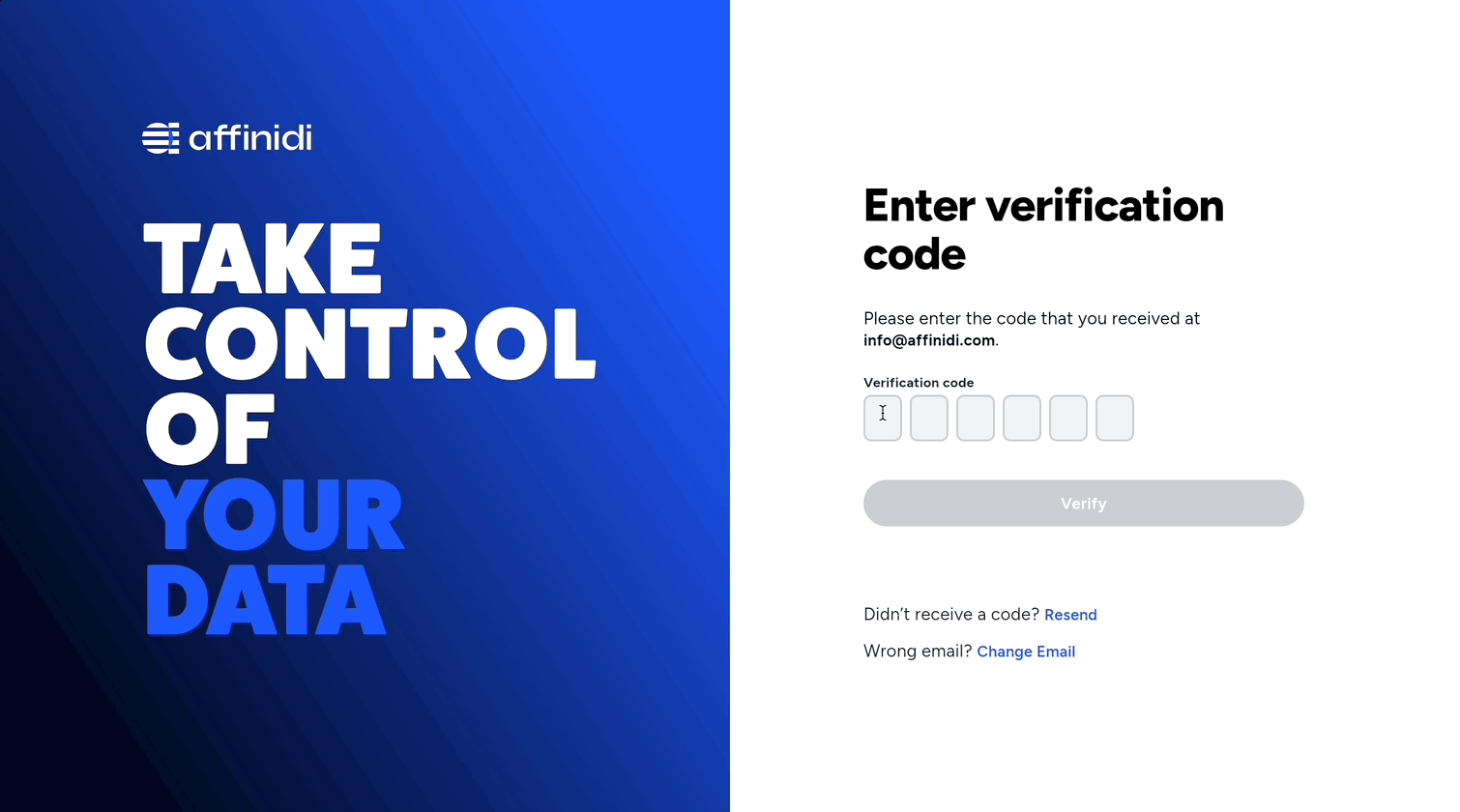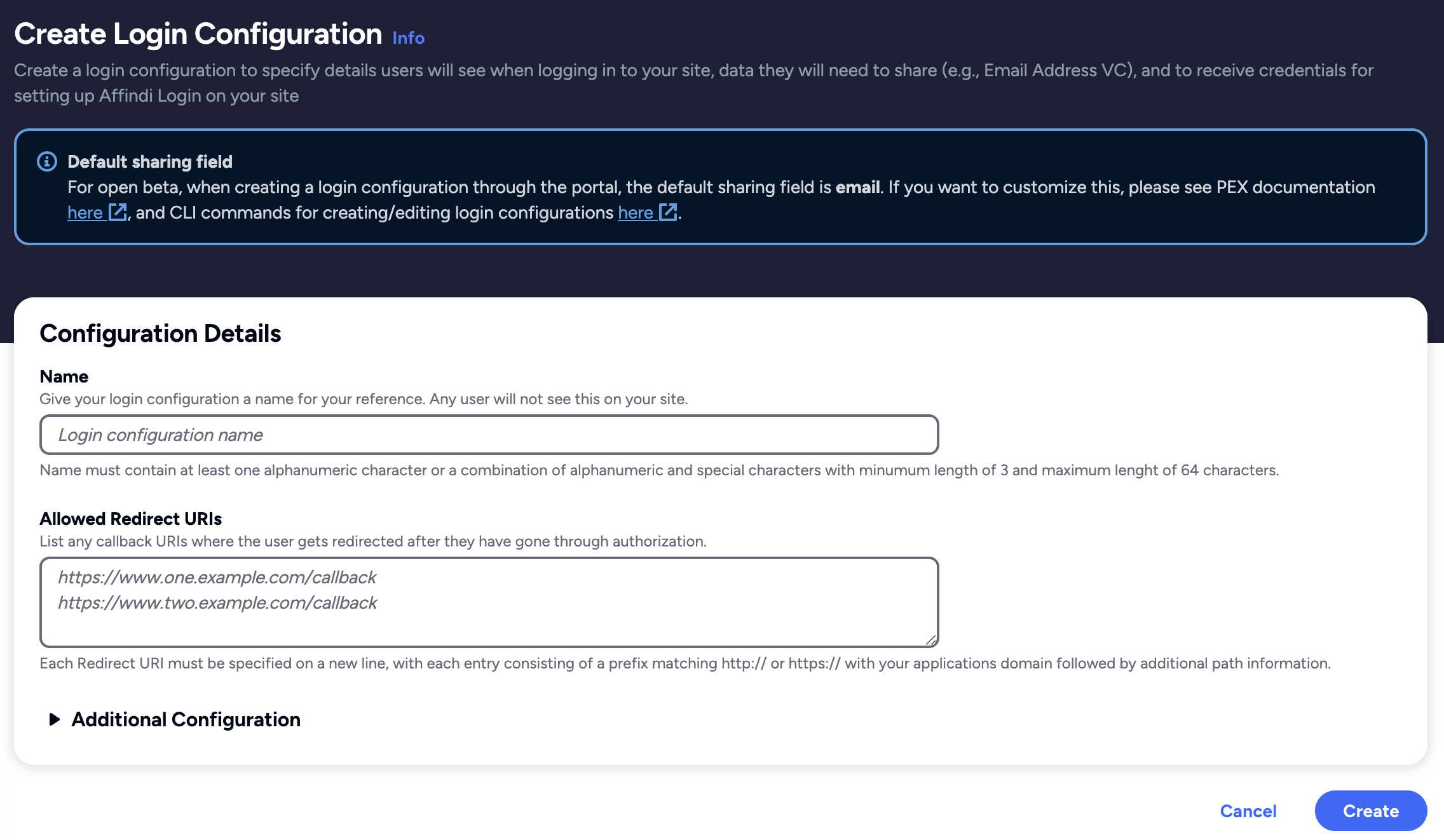Quick Start with Affinidi Login
The Affinidi Login can be integrated with any application that supports OIDC flow.
Before you begin
- Set up Affinidi Vault account. Follow the guide below if you haven’t set it up yet.
Get the Redirect URI of your application for OIDC. This is the URI configured on your Login Configuration to receive the idToken after successful authorisation.
Optionally, install the Affinidi CLI. Follow the guide below if it hasn’t been installed.
Create Login Configuration
To integrate Affinidi Login into your application, you must create the Login Configuration to configure on your OIDC settings.
- To create a Login Configuration, you can either use Affinidi CLI or
Affinidi Portal.
Expand the section for your preferred method:
Login Configuration uses a default Presentation Definition (presentationDefinition) and ID Token Mapping (idTokenMapping) to request the user’s email address during the authentication flow.
You can modify these defaults using 
Important
Safeguard the Client ID and Client Secret diligently; you'll need them for setting up your IdP or OIDC-compliant applications. Remember, the Client Secret will be provided only once.
Setting Up Your Application
If you are using libraries or plugins to enable OpenID Connect flow on your application, please refer to their documentation on configuring these settings. You can explore our labs to learn how to integrate Affinidi Login with well-known frameworks and other IDP solutions.
- Go to your application’s OIDC settings and configure the following details to integrate Affinidi Login into your application’s login flow.
{
"clientId": "<AUTH.CLIENT_ID>",
"clientSecret": "<AUTH.CLIENT_SECRET>",
"scope": "openid offline_access",
"authorizationUrl": "<AUTH.ISSUER>/oauth2/auth",
"tokenUrl": "<AUTH.ISSUER>/oauth2/token"
}Once you have successfully set up the details on your application, you can enable a passwordless login for your end-users to provide a seamless experience using Affinidi Vault as the Identity Provider.
- After the user successfully verifies their identity through Affinidi Login and consents to share their info (e.g Email VC), it redirects the user back to your application with the ID Token.
See below example callback response from Affinidi Login:
"idToken": {
"acr": "0",
"at_hash": "YVxxMI3NbwfOmL3qZJKlWg",
"aud": [
"6a2e4be6-37f6-4669-a93a-ced4b92117a6"
],
"auth_time": 1686131332,
"custom": [
{
"type": [
"VerifiableCredential",
"Email"
]
},
{
"email": "john.doe@affinidi.com"
},
{
"did": "did:key......"
}
],
"exp": 1686138537,
"iat": 1686131337,
"iss": "https://<PROJECT_ID>.apse1.login.affinidi.io",
"jti": "02d5845a-626d-4513-bad0-556c1803c6e2",
"rat": 1686131327,
"sid": "ac1bd00d-108f-48e2-8481-7f4cd96fa745",
"sub": "did:key......"
}Affinidi Login automatically adds users who successfully authenticate to your application to the default user group. You can create additional User Groups to organise your users and provide them with the necessary authorisation to access your application resources and apply different business logic after the user successfully authenticates.
You can try our 5 simple steps for integrating Affinidi Login and explore our labs to learn more about ways to integrate Affinidi Login.
Glad to hear it! Please tell us how we can improve more.
Sorry to hear that. Please tell us how we can improve.
Thank you for sharing your feedback so we can improve your experience.




